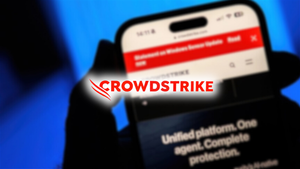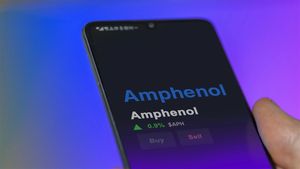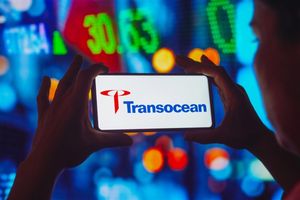
In a landscape increasingly defined by artificial intelligence and ecosystem integration, tech giants Apple (NASDAQ: AAPL) and Samsung (KRX: 005930) are locked in an intense battle for smartphone market dominance in 2025. Their perennial rivalry has reached new heights, driven by groundbreaking innovations in their flagship devices, aggressive marketing tactics, and a relentless pursuit of market share across all segments.
The immediate implications of this fierce competition are profound, accelerating the pace of technological advancement, particularly in on-device AI capabilities, and reshaping consumer expectations for mobile technology. As both companies push the boundaries of what a smartphone can do, the ripples of their strategic decisions are felt across the entire tech industry, dictating trends in hardware, software, and user experience.
The Titans' Clash: AI Takes Center Stage in 2025 Flagships
The year 2025 has witnessed a significant escalation in the competitive strategies of Apple and Samsung, with Artificial Intelligence emerging as the central battleground. Both companies have unveiled flagship devices laden with advanced AI features, aiming to define the next generation of smartphone interaction. The stakes are immense, as market share figures fluctuate, reflecting the nuanced success of their respective approaches.
In the first quarter of 2025, market research firms reported a neck-and-neck race for global smartphone dominance. While Counterpoint Research briefly placed Apple ahead with a 19% share, propelled by the launch of the iPhone 16e and expansion into key markets, other firms like Canalys and IDC indicated Samsung either slightly leading or maintaining a close second. Canalys, for instance, reported Samsung leading with a 20% share, shipping 60.5 million units. Despite the intense competition, both companies have seen slight dips in their overall global market share compared to the previous year, a testament to the growing influence of Chinese brands such as Vivo (SHE: 002594), Xiaomi (HKEX: 1810), and Huawei (SHE: 002502). In the premium segment (devices over $600), Apple maintains a significant lead, holding 62% of the market share in the first half of 2025, although this represents a slight decline from the previous year. Samsung secured the second position with a stable 20% share in this segment, showing a 7% rise in unit sales.
Apple's iPhone 17 series, launched in September 2025, showcases a design evolution with Pro models featuring an aluminum-titanium alloy frame and a streamlined camera bar with a triangular lens layout. Key innovations include reverse wireless charging in Pro models, a first for Apple, alongside substantial camera advancements such as a 40MP telephoto lens with true variable optical zoom in the iPhone 17 Pro Max, and a 48MP Dual Fusion camera system in the standard iPhone 17. Powering these devices is the new A19 Bionic chip, complemented by a vapor chamber cooling system for sustained performance. Crucially, Apple's (NASDAQ: AAPL) AI strategy, "Apple Intelligence," is deeply integrated into iOS 26, emphasizing privacy-centric, on-device processing across its entire product line.
Samsung's (KRX: 005930) Galaxy S25 series, unveiled in January 2025, declared the company's ambition to be an "undisputed leader in AI devices." Powered by the Snapdragon 8 Elite processor globally, these phones offer a "true AI companion" experience with enhanced AI processing for creative tasks like Generative Edit and Instant Slow-mo. The series features an upgraded 12MP front-facing camera with an AI-powered ProVisual Engine and a larger vapor chamber for thermal management. The Galaxy S25 Ultra boasts a 6.9-inch QHD+ AMOLED 120Hz display and a 200MP wide camera lens. Furthermore, Samsung continues its leadership in foldable technology with models like the Galaxy Z Fold 7 and Z Flip, offering unique form factors that continue to garner significant consumer interest and differentiate them in the market. The later release of the Galaxy S25 FE in September 2025 aims to democratize access to the Galaxy AI ecosystem.
The ongoing battle is further fueled by aggressive marketing campaigns. Following the iPhone 17 launch, Samsung promptly initiated an "iCant" campaign, directly mocking Apple's new devices for perceived shortcomings, particularly concerning foldable phones and camera megapixels, and overtly challenging Apple users to switch to the Galaxy ecosystem. This direct confrontation underscores the intensity of their rivalry and their determination to sway consumer loyalty.
Winners and Losers: Ecosystems and Accessibility Vie for Dominance
In the high-stakes game between Apple and Samsung, the primary winners are undoubtedly consumers, who benefit from an accelerated pace of innovation and increasingly sophisticated devices. However, within the corporate landscape, the fight for supremacy creates clear winners and losers, influencing not just the companies themselves but also their vast networks of suppliers, developers, and partners.
Apple's continued dominance in the premium smartphone segment solidifies its position as a winner, especially as it continues to command higher average selling prices. Its tightly integrated hardware, software, and services ecosystem, bolstered by "Apple Intelligence" in iOS 26, ensures robust customer loyalty and retention. This "walled garden" approach continues to be a significant advantage, driving consistent revenue streams from both hardware sales and its high-margin services division. Suppliers of advanced components like custom silicon manufacturers and high-resolution camera sensor producers also stand to gain from Apple's unwavering focus on cutting-edge technology. However, Apple's reluctance to embrace diverse form factors, particularly foldables, could be seen as a potential strategic vulnerability in the long run, especially as Samsung continues to innovate aggressively in this space.
Samsung's strategic diversification, combining premium flagships with strong mid-range offerings like the Galaxy A series, positions it as a winner in terms of broader market reach and accessibility. Its aggressive push into AI, aiming to be an "undisputed leader," could attract a wider user base seeking cutting-edge smart features without necessarily committing to Apple's ecosystem. The success of its foldable devices further carves out a unique niche, appealing to early adopters and those seeking novel smartphone experiences. For component suppliers, especially those in flexible display technologies (e.g., Samsung Display) and advanced camera modules, Samsung's diverse portfolio offers multiple avenues for growth. The challenge for Samsung remains in enhancing software refinement and achieving a level of ecosystem integration that can truly rival Apple's seamless experience, which is crucial for long-term customer lock-in.
The increasing competition from Chinese smartphone manufacturers like Xiaomi (HKEX: 1810), Vivo (SHE: 002594), and Huawei (SHE: 002502) poses a challenge for both Apple and Samsung. These brands, often offering competitive specifications at more aggressive price points, are steadily eroding market share in various regions. While they may not directly challenge Apple in the ultra-premium segment, their strong performance in mid-to-high tiers creates pressure on Samsung's diversified strategy and could force both market leaders to innovate faster and more efficiently to maintain their lead. Furthermore, the intensifying "AI arms race" means that any company failing to keep pace with AI integration could quickly fall behind, becoming a clear loser in the rapidly evolving smartphone market.
Industry Impact and Broader Implications: A Shifting Tech Landscape
The intense rivalry between Apple and Samsung in 2025 extends far beyond their immediate corporate skirmishes, sending significant ripple effects across the entire technology industry and influencing broader market trends. Their competitive strategies are not just about selling more phones; they are shaping the future of mobile computing, setting benchmarks for innovation, and even influencing global supply chains.
One of the most profound industry impacts is the accelerated development of Artificial Intelligence. Both Apple and Samsung are pouring vast resources into AI research and development, treating it as the next frontier for competitive differentiation. This means that other smartphone manufacturers, chipset developers, and software providers must also significantly ramp up their AI capabilities to remain relevant. The focus on privacy-centric, on-device AI from Apple, contrasted with Samsung's broader "true AI companion" approach, pushes the entire industry to consider both the power and ethical implications of integrated AI. This arms race is fostering rapid advancements in neural processing units (NPUs), machine learning algorithms, and AI-powered user interfaces across the board.
The diversification of global supply chains is another critical implication. Geopolitical tensions and lessons learned from past disruptions have prompted both Apple and Samsung to strategically expand their manufacturing footprints beyond traditional hubs like China. Apple's active push into countries like India and Vietnam, and Samsung's similar expansions into Vietnam, India, and Egypt, are not just internal corporate decisions. They represent a broader industry trend towards resilient, de-risked supply chains. This shift creates new economic opportunities in emerging markets but also presents challenges in terms of infrastructure development, labor force training, and quality control for the vast ecosystem of component suppliers and assembly partners.
Samsung's continued investment and innovation in foldable smartphone technology are challenging the conventional smartphone form factor and pressuring the entire industry to explore new designs. While Apple has yet to enter the foldable market, Samsung's consistent releases of the Galaxy Z Fold and Z Flip series are building consumer interest and market maturity for these unique devices. This could eventually force Apple, and indeed other major players, to seriously consider or accelerate their own foldable device strategies, leading to a new wave of design and engineering innovation across the industry. The success of foldables could redefine user interaction and application development for mobile devices, moving beyond the traditional slab design that has dominated for over a decade.
Historically, such intense rivalries, like those between IBM (NYSE: IBM) and Microsoft (NASDAQ: MSFT) in the PC era or Intel (NASDAQ: INTC) and AMD (NASDAQ: AMD) in microprocessors, have consistently driven rapid innovation and ultimately benefited consumers. The current Apple-Samsung dynamic is no different, ensuring that consumers receive increasingly powerful, feature-rich, and innovative devices. Furthermore, the emphasis on ecosystem integration, with both companies striving to seamlessly connect their smartphones with smartwatches, tablets, and other IoT devices, is accelerating the development of interconnected smart homes and personal computing environments. This trend is creating new markets for accessories, smart home devices, and cross-platform software solutions, impacting a broad spectrum of tech companies.
What Comes Next: The Unfolding Future of Mobile Innovation
The intense competitive dynamic between Apple and Samsung in 2025 sets the stage for a compelling future in the smartphone market, characterized by rapid evolution, strategic pivots, and emerging opportunities. The next few years will likely see both companies double down on their respective strengths while simultaneously addressing weaknesses and anticipating future technological shifts.
In the short-term, the "AI arms race" will undoubtedly intensify. We can expect an even deeper integration of generative AI into core operating system functionalities, pushing beyond simple photo edits and personal assistants to truly predictive and proactive user experiences. This could manifest as AI-powered interfaces that dynamically adapt to user habits, advanced natural language processing for entirely new forms of device control, and enhanced on-device security measures leveraging AI. Both companies will continue to refine their AI strategies, with Apple likely maintaining its privacy-first, on-device approach and Samsung pushing for a more ubiquitous, cloud-integrated AI experience, potentially leading to distinct user preferences and platform differentiation.
Long-term possibilities include further diversification in form factors. While Samsung is leading with foldables, the market will watch closely if Apple finally enters this segment, which could legitimize and rapidly expand the foldable market. Beyond foldables, both companies are likely exploring extended reality (XR) integration, potentially blending smartphone capabilities with augmented or virtual reality devices. The push for sustainability and eco-friendly manufacturing will also grow in importance, influencing material choices, repairability, and lifecycle management for devices. Strategic pivots may involve increased focus on health tech integration, leveraging advanced sensors and AI to provide more comprehensive personal health monitoring, potentially turning smartphones into indispensable health companions.
Market opportunities will emerge for developers creating AI-native applications and services that truly leverage the advanced capabilities of these new devices. Accessory manufacturers will find new avenues for innovation, particularly as wireless charging, advanced haptics, and modular designs become more prevalent. Conversely, challenges will include managing the increasing complexity and cost of R&D for cutting-edge technologies, navigating regulatory scrutiny around data privacy and AI ethics, and maintaining profitability amidst intense competition and potentially slowing global smartphone growth. The threat from Chinese manufacturers offering high-value alternatives will also remain a persistent challenge, particularly in growth markets.
Potential scenarios range from a continued duopoly with each company dominating specific segments (Apple in ultra-premium, Samsung across a wider range) to a more fragmented market where niche players with unique innovations gain significant traction. Another scenario could see one company achieving a breakthrough in a new technology (e.g., true holographic displays or seamless brain-computer interfaces) that fundamentally reshapes the market. Investors should closely watch R&D spending, patent filings, and strategic partnerships, as these will be key indicators of future innovation and competitive advantage. Earnings reports will provide insights into the success of their pricing and market segmentation strategies, particularly in the critical holiday sales periods.
Conclusion: A Defining Era for Mobile Technology
The year 2025 stands as a defining moment in the enduring rivalry between Apple and Samsung, marking an era where Artificial Intelligence has undeniably become the primary battleground for smartphone supremacy. The comprehensive analysis reveals a market where innovation is rampant, competition is fierce, and the stakes for global market dominance are higher than ever.
Key takeaways include the relentless pursuit of AI leadership by both tech giants, each employing distinct strategies—Apple with its privacy-centric "Apple Intelligence" deeply integrated into iOS 26, and Samsung with its ambition to be an "undisputed leader in AI devices" across its diverse Galaxy lineup. The fluctuating market share, with both companies frequently swapping the top spot and facing increased pressure from Chinese competitors, underscores the dynamic nature of the smartphone landscape. Flagship device innovations, from Apple's iPhone 17 series with advanced camera and reverse wireless charging to Samsung's Galaxy S25 series pushing foldable technology and comprehensive AI experiences, highlight their commitment to pushing technological boundaries.
Moving forward, the smartphone market will continue its rapid evolution, driven by this intense rivalry. Consumers can expect a continuous stream of more intelligent, intuitive, and feature-rich devices. The broader industry will witness further shifts in global supply chains, an accelerating pace of AI development across all tech sectors, and an ongoing exploration of novel device form factors. The competitive strategies employed by Apple (NASDAQ: AAPL) and Samsung (KRX: 005930) are not just dictating the future of their own companies but are charting the course for the entire mobile technology ecosystem.
Investors should closely monitor several critical factors in the coming months. The adoption rates of their new AI features will be crucial indicators of user satisfaction and stickiness. Performance in key growth markets, especially India and other emerging economies, will reveal the effectiveness of their market penetration strategies. Furthermore, any significant advancements or strategic pivots in new technologies like extended reality or further refinements in foldable designs could signal the next major shift. The ongoing financial performance of their services divisions will also be a critical barometer, as both companies seek to diversify revenue beyond hardware sales. The Apple-Samsung saga in 2025 is a testament to relentless innovation and strategic combat, promising an exhilarating and transformative period for mobile technology.






